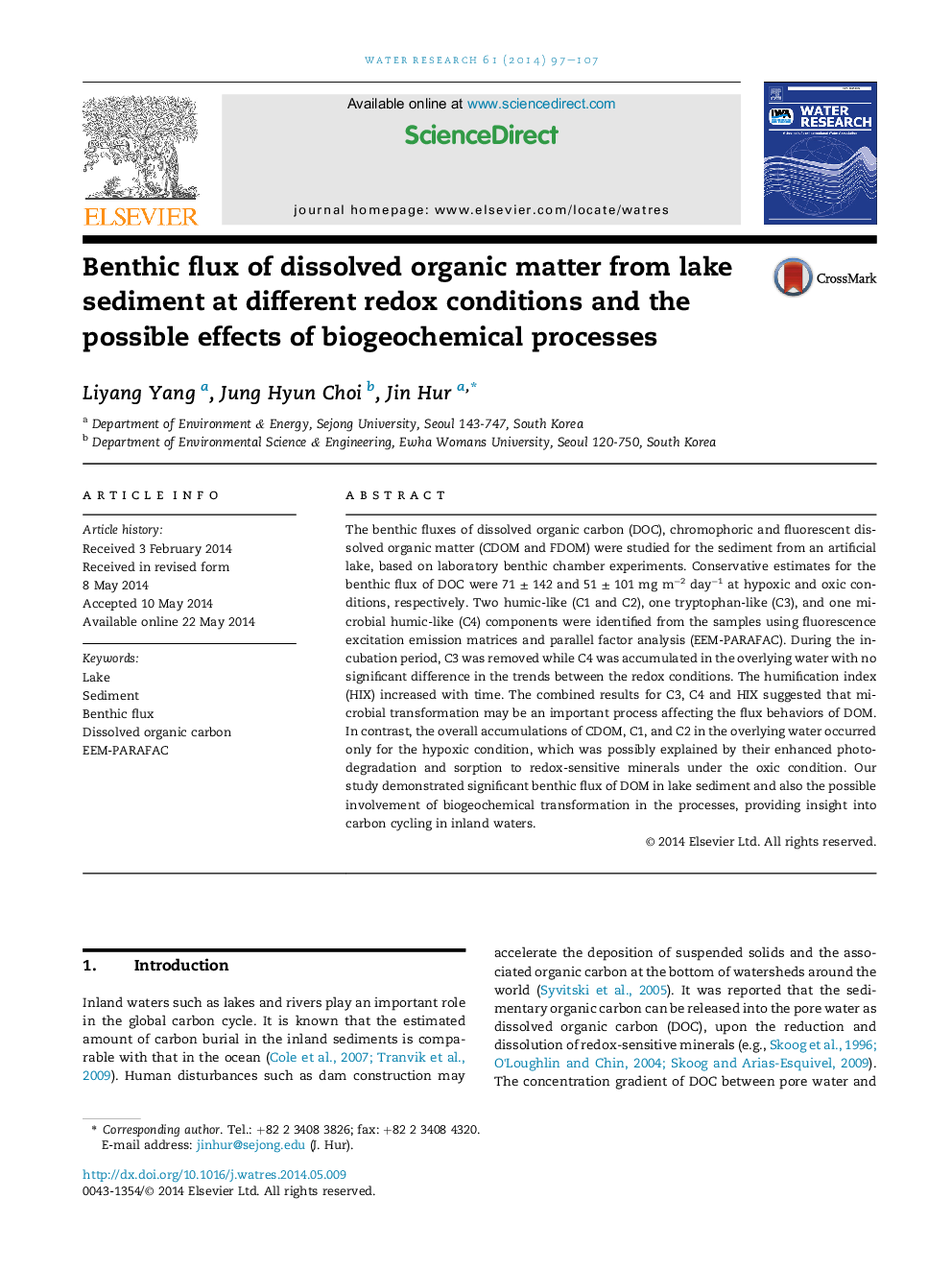| Article ID | Journal | Published Year | Pages | File Type |
|---|---|---|---|---|
| 6366518 | Water Research | 2014 | 11 Pages |
â¢DOC benthic fluxes were quantified for lake sediments based on benthic chamber experiments.â¢EEM-PARAFAC was applied to successfully track changes in benthic flux DOM quality.â¢Different behaviors of the net DOM benthic fluxes were found for contrasting redox conditions.â¢Potential influences of various biogeochemical processes on the apparent DOM benthic flux were discussed.
The benthic fluxes of dissolved organic carbon (DOC), chromophoric and fluorescent dissolved organic matter (CDOM and FDOM) were studied for the sediment from an artificial lake, based on laboratory benthic chamber experiments. Conservative estimates for the benthic flux of DOC were 71 ± 142 and 51 ± 101 mg mâ2 dayâ1 at hypoxic and oxic conditions, respectively. Two humic-like (C1 and C2), one tryptophan-like (C3), and one microbial humic-like (C4) components were identified from the samples using fluorescence excitation emission matrices and parallel factor analysis (EEM-PARAFAC). During the incubation period, C3 was removed while C4 was accumulated in the overlying water with no significant difference in the trends between the redox conditions. The humification index (HIX) increased with time. The combined results for C3, C4 and HIX suggested that microbial transformation may be an important process affecting the flux behaviors of DOM. In contrast, the overall accumulations of CDOM, C1, and C2 in the overlying water occurred only for the hypoxic condition, which was possibly explained by their enhanced photo-degradation and sorption to redox-sensitive minerals under the oxic condition. Our study demonstrated significant benthic flux of DOM in lake sediment and also the possible involvement of biogeochemical transformation in the processes, providing insight into carbon cycling in inland waters.
Graphical abstractDownload high-res image (213KB)Download full-size image
